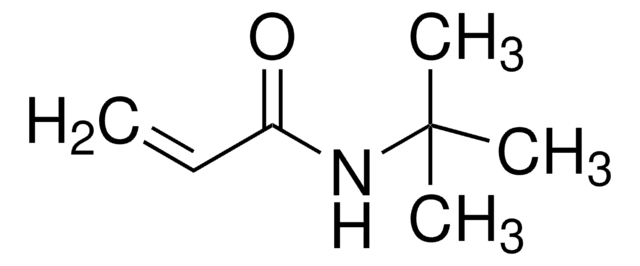327182
tert-Butyl acrylate
contains 10-20 ppm monomethyl ether hydroquinone as inhibitor, 98%
Sinónimos:
t-Butyl acrylate
About This Item
Productos recomendados
Análisis
98%
formulario
liquid
contiene
10-20 ppm monomethyl ether hydroquinone as inhibitor
índice de refracción
n20/D 1.410 (lit.)
bp
61-63 °C/60 mmHg (lit.)
densidad
0.875 g/mL at 25 °C (lit.)
cadena SMILES
CC(C)(C)OC(=O)C=C
InChI
1S/C7H12O2/c1-5-6(8)9-7(2,3)4/h5H,1H2,2-4H3
Clave InChI
ISXSCDLOGDJUNJ-UHFFFAOYSA-N
¿Está buscando productos similares? Visita Guía de comparación de productos
Descripción general
Aplicación
tert-Butyl acrylate can also be used as:
- A building block in the synthesis of asymmetric membranes, which are potentially useful in filtration, separation, or gas permeation processes.
- A monomer in the preparation of a siloxane-incorporated copolymer binder for silicon anodes in lithium-ion batteries.
- A monomer in the synthesis of poly(tert-butyl acrylate)/carbon nanofiber (CNF) materials through atom transfer radical polymerization (ATRP).
Palabra de señalización
Danger
Frases de peligro
Consejos de prudencia
Clasificaciones de peligro
Acute Tox. 3 Inhalation - Acute Tox. 4 Dermal - Acute Tox. 4 Oral - Aquatic Chronic 2 - Flam. Liq. 2 - Skin Irrit. 2 - Skin Sens. 1 - STOT SE 3
Órganos de actuación
Respiratory system
Código de clase de almacenamiento
3 - Flammable liquids
Clase de riesgo para el agua (WGK)
WGK 2
Punto de inflamabilidad (°F)
62.6 °F - closed cup
Punto de inflamabilidad (°C)
17 °C - closed cup
Equipo de protección personal
Eyeshields, Faceshields, Gloves, type ABEK (EN14387) respirator filter
Certificados de análisis (COA)
Busque Certificados de análisis (COA) introduciendo el número de lote del producto. Los números de lote se encuentran en la etiqueta del producto después de las palabras «Lot» o «Batch»
¿Ya tiene este producto?
Encuentre la documentación para los productos que ha comprado recientemente en la Biblioteca de documentos.
Los clientes también vieron
Artículos
Block copolymer synthesis using a commercially available nitroxide-mediated radical polymerization (NMP) initiator
Nuestro equipo de científicos tiene experiencia en todas las áreas de investigación: Ciencias de la vida, Ciencia de los materiales, Síntesis química, Cromatografía, Analítica y muchas otras.
Póngase en contacto con el Servicio técnico
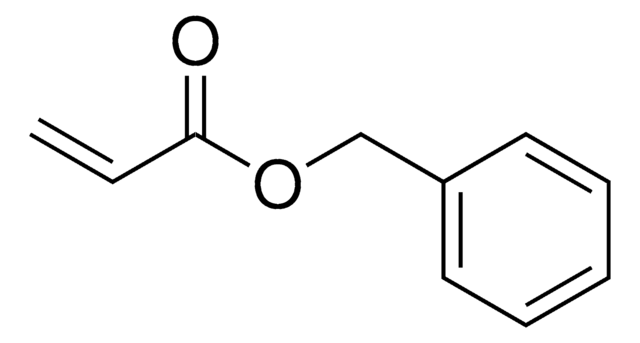



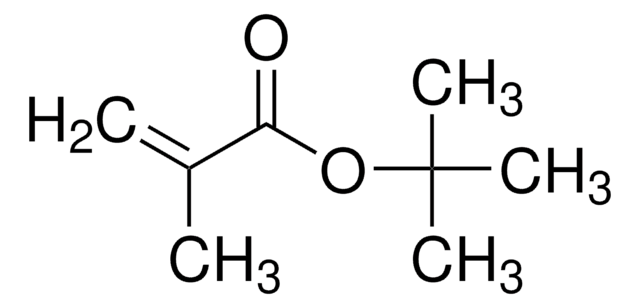


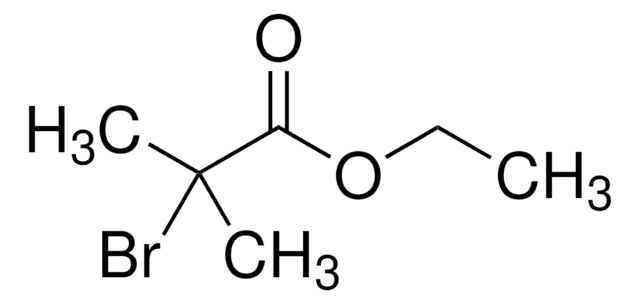



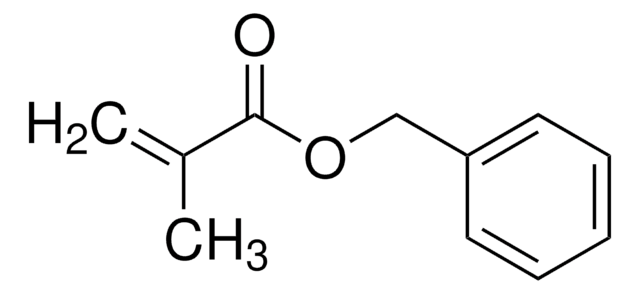

![Tris[2-(dimethylamino)ethyl]amine 97%](/deepweb/assets/sigmaaldrich/product/structures/695/792/ee0ff167-22a3-43a7-83a1-6c4908adf0ae/640/ee0ff167-22a3-43a7-83a1-6c4908adf0ae.png)
